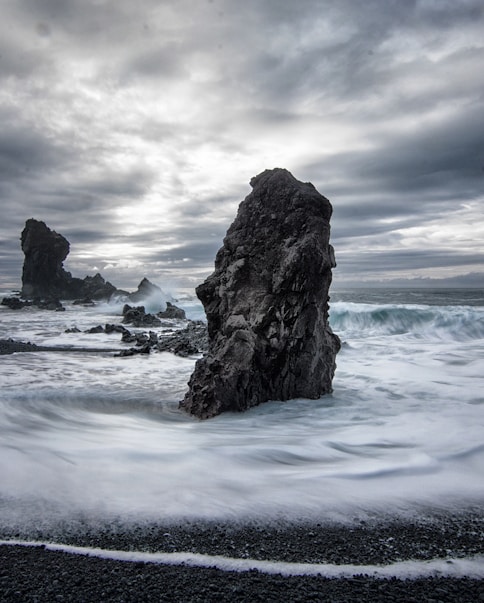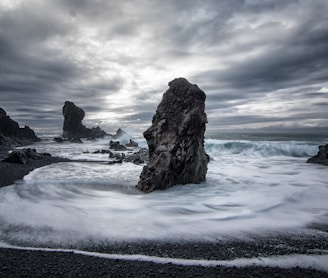Viking geography and kingdom
First, the Vikings were originally from Scandinavia, which consists of Sweden, Norway, and Denmark. Jutland's south, where the Danevirke stands, has less agricultural potential. As a result, Scandinavians and Germans have developed a cultural barrier.
In addition, Finland is not a part of Scandinavia. They are part of Baltic culture, not German or Scandinavian. The Sweeden Kingdom, however, colonized a part of Finland in the 12th century.
Iceland and the Faroe Islands were colonized by the norse during the Viking age. Vikings colonized other places as well, but the Norseman lived assimilate at the regional culture after the Viking Kingdom fell.


Denmark Kingdom
The Danes had frequent contact with the German tribes and the Frankish empire. In addition, the Denmark Kingdom included a large part of Sweeden, primarily Gotaland.
In the 9th century, the Danes harassed the Frankish empire and the island of England constantly. Other places have been raided too, but not at comparable levels.
It was between 865 and 879 when the famous heathen army of Denmark conquered much of the island of Great Britain. The York Kingdom will be established.
On the other side of the English Channel, Charles the simple gave Normandy territory at Rollo in 911. There is some debate over whether Viking Rollo was Norwegian or Danish.
Normandy did not belong to the Danes, but York Kingdom and England will be under the direction of Denmark's king, Cnut the great in 1016AD
Norway Kingdom
It was Norwegians who explored the north Atlantic ocean. In the period when the Danish raided around the English Channel, the Norwegians raided Scotland, mainly the highlanders, and Ireland.
In 870, they established the Earls of Orkney in the north of Scotland and the small colony of Dublin in 852. In addition, some Norwegian exiles have settled on Faroe Island, Iceland, and Greenland. As far as we know, there was never a permanent Viking settlement in America. Furthermore, Norwegians from Greeland explored North America.
Denmark and Norway were rivals throughout the viking era. Occasionally, both kingdoms have taken control of one another's territories or the entire kingdom.
Sweeden Kingdom
Sweden was formed around Uppsala, where there was a large peagan settlement. In terms of Christian convergence, the Swedes were the last.
Among the three scandinave kingdoms, the sweden was the least powerful. His power will increase after the Viking era.
Around 862AD, the Swedens gained control of the Kievan Rus, but lost it around 978AD. Gotland was also a very important trade center between Scandinavian, Baltic, and Slavic nations.
Sweden has not participated in many wars, but many swede soldiers have fought as mercenaries for the norwegians and danes
Normandy
After centuries of raiding by the Danish Vikings, a Frankish king gave Normandy to a Viking leader. In 911AD, Charle the Simple gave Normandy to Rollo, probably a Dane, but maybe a Norwegian. There will be three expansions of this territory after this; in 924, in 933, and in 1051.
The Normandy Vikings will adopt the Frank culture by assimilation. Normandy will primarily trade with Franks. Culture is always transmitted through commercial trade. The Scandinavian influence is still evident in French language, notably in maritime terms.
In 1066, William the conqueror leader of Normandy will invade England, increasing the importance of this territory. As a result of this conquest, the Hundred Years War began in 1337.
Dublin Ireland
Having raided all the coast of Ireland after a century, Norwegian Vikings created a settlement in Dublin in 874 and many smaller ones around 914. Irish vikings will have a similar fate to the Norman Vikings. Since they will mostly trade with Irish people, they will gradually become assimilated into the Gaelic culture.
However, this dublin colony will play an important role in the history of England, more specifically the history of York. In the period between 921 and 945, the Dublin Vikings will fight the Danes for control of the York Kingdom. York will be ruled by Sigtryg II and Guthfrith for only a short time in 921 and 927, respectively. However, Dublin vikings will not be able to control York Kingdom.
At the battle of Clontarf in 1014, the Irish king Brian Boru will defeat the Vikings. In the following years, the island will be controlled by the two Irish kingdoms, Meath and Munster.
Kievan Rus
In terms of portraying the Viking era, this state and region are very influential. A raid by vikings means nothing if they cannot sell their loot.
Kievan Russian is used here, as well as the trade route that connects with the Byzantine Empire and Islamic Kingdom. Raid loot was traded for silver where richest Vikings came from. This state was centered around Kiev and Novgorod as its main trade centers.
During the birth of Kievan Russia in 862, both Rurik and Oleg were Swedish (varegue). Following that, the leader became more and more slavic until Vladimir I in 978. The trade route became much more difficult after Vladimir I when the Swedes and Vikings no longer controlled this state.
The period 862 to 1240 was considered the time of the Kievan Rus. The invasion of the Mongols ends them. During all this time, the Rus have raided and attacked Bulgar, Khazar and Byzantin several times.
Iceland and Faroe Island
The origin stories of these two regions are almost identical. First settlers on those islands were Irish, not Vikings. It is likely that the Irish discovered these islands around 800. Norwegian vikings, however, colonized those islands during all of the 9th century to get away from the command of their king.
Norwegian authority will claim the Faroe island in 895. Iceland was ruled by 430 leaders who formed an oligarchy centered on the primitive Althing (still in operation today). Today, it serves as Iceland's parliament.
Greeland and Vinland
In 900AD, Erik the Red allegedly convinced 25 icelander ships to settle in the south of Greenland. At the peak of those settlements, around 4000 people lived there.
Around 1300, the climate changed to become colder. In response, the Eskimo of the north moved south, where the Vikings were settling. The Eskimo have taken over all of Greenland two centuries later.
It is Erik the Red's son who travels the Canadian coasts. In the far north of Newfoundland, a single settlement has been found. During AD 1000-1020, it was only used briefly. There is evidence that Vikings traded and traveled throughout the Gulf of Saint-Lawrence, but their presence was limited.
York Kingdom (England)
The great heathen army vikings established York Kingdom on top of Northumbria's ruins in 865. There was a civil war in Northumbria at that time between the pretenders to the throne. In the course of the Danish invasion, the two pretend kings were unified in their desire to expel the Danish, but failed.
The Kingdom of York has changed hands several times. This kingdom controlled by the Danes has constantly been contested by the norwegian-gaelic of Dublin.
The last Dane to rule York was Erik the Bloodaxe in 954. As a result of the Norman conquest of England in 1035, the York Kingdom will become part of the England Kingdom.
Even if the Vikings controlled and colonized this territory for one hundred years, their farmers and other immigrants were assimilate into Anglo-Saxon culture. However, the influence of the past Vikings can be seen by the name of the city and many vikings word in English.
Earls of Orkney
In the wake of the raid vikings, Scottland was divided into four kingdoms. In the aftermath of the four kingdoms unification, the scottland became too powerful to be victimized by raiding Vikings.
Nevertheless, the norwegian vikings colonized Scotland's north, where the land was not fertile. It is important to remember that Norwegian was very present in Ireland and Faroe Islands. Therefore, those islands were on the route between Norway and Dublin.
Around 800, the Vikings colonized the archipelago of Orkney and Shetland. The gaelic population of the area has completely assimilated into the norse culture without a fight. There was just no way to do it. Hebrides, in the west of highlanders of Scotland, saw many battles between Irish and Vikings in the 9th century. Ultimately, the Vikings won.
Between 870 and 1079, all settlements and the island of man will be united progressively. Under the rule of Godred Crovan, rulers of the Isle of Man, this union reached its maximum extent. Between 1104 and 1469, the kingdom of Scotland will gradually annex all territories.
Bibliography :
1-John Lindow ''Norse Mythology : A Guide to the Gods, Heroes, Rituals and Beliefs '' New York : Oxford University, 2002
2-Neil Price ''The Viking way : Magic and Mind in late iron age scandinavia '' United Kingdom : Oxbow Books , 2019
3-Régis Boyer ''Les Vikings : Histoire, Mythes, Dictionnaire '' France: Édition Robert Laffont , 2008
4-John Haywood ''Historical Atlas of the Vikings '' United State : Penguin Books, 1995






